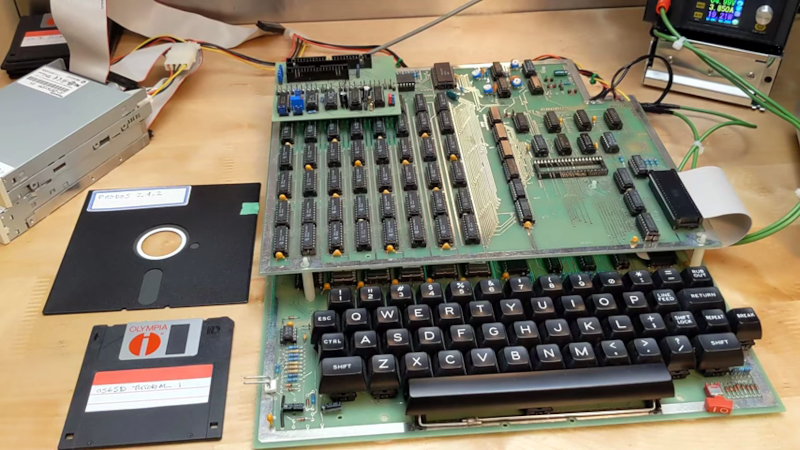OSI Superboard II Replicated [Hackaday]

While our modern computer can easily emulate a lot of different old machines, there is something about having replica hardware that is even better. Not as nice as having the real thing, in some ways, although you don’t have to worry about wear and tear on a replica, either. [Jeff Tranter] has built a kit replica of an Ohio Scientific Superboard II, and it looks great, as you can see in the video below.
This was an inexpensive all-in-one 6502 computer with a keyboard and provision for TV or monitor output. If you had a 5V power supply, a cassette deck, and a TV you were in business for less money than most of the comparable alternatives. In fact, [Jeff] has the canceled check where his parents paid $486 Canadian for one in 1981. That was his introduction to computing, and we’d say that was a reasonable investment on the part of his parents.
Like many of us, [Jeff] was sad when his old computer was destroyed while in storage. But undeterred, he set out to build a replica. Earlier, he’d built a reproduction kit that used modern components, but he wanted something a bit more faithful. He noticed that modern reproduction PCBs were available for the board and some matching I/O as well. The boards are very similar to the original, with a few concessions to modern times like footprints for modern keyboard switches and EEPROMs.
Not all of the parts are readily available, but with a little detective work, you can get what you need. He even found replica keycaps. The original machine had a locking shift lock key which wasn’t unusual in those days, but that’s hard to find now. Because of this, the redesigned PCB has space for an external caps lock switch. You might think you don’t care, but BASIC and other software of the day often expected uppercase input only.
If you’ve never built a board without solder mask, you’ll want to be careful as it is surprisingly easy to bridge connections inadvertently. [Jeff] found that out the hard way. It makes us want to recreate some of the computers of our youth, too.
While Ohio Scientific doesn’t have the name recognition of Apple, they had a lot of affordable products in the early day of personal computers. If we want to follow in [Jeff’s] footsteps, we’ll need an 1802 and some perfboard.
Thanks to [Stephen Walters] for the tip.

![osi-superboard-ii-replicated-[hackaday]](https://i0.wp.com/upmytech.com/wp-content/uploads/2023/04/120340-osi-superboard-ii-replicated-hackaday.png?resize=800%2C445&ssl=1)